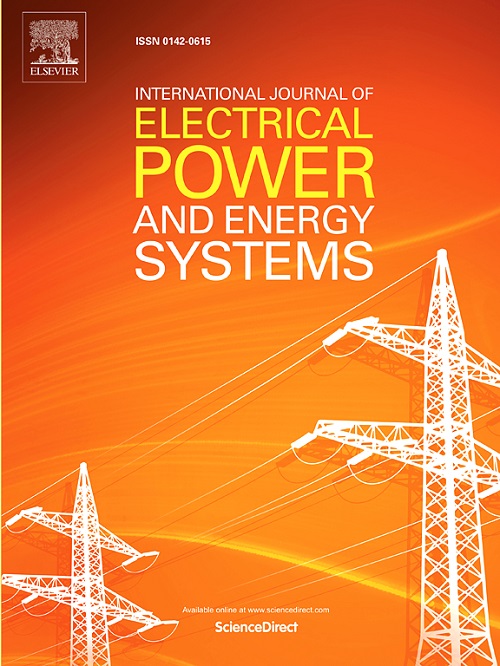Analysis of high-frequency oscillation mechanism of inverter with motor load based on series resonance
IF 5
2区 工程技术
Q1 ENGINEERING, ELECTRICAL & ELECTRONIC
International Journal of Electrical Power & Energy Systems
Pub Date : 2025-06-09
DOI:10.1016/j.ijepes.2025.110799
引用次数: 0
Abstract
Inverter-driven asynchronous motor loads represent typical operational scenarios in shipboard integrated power systems. The inverter’s output impedance characteristics are influenced by complex control dynamics, and the interaction between source and load impedances presents a risk of high-frequency resonance. To address this, this paper first uses the harmonic linearization method to establish sequence impedance models of the inverter and asynchronous motor. It analyses the high-frequency impedance characteristics of the source and load, developing an equivalent high-frequency RLC circuit model. The oscillation mechanism is revealed from the perspective of system series resonance. Specifically, when the positive resistance of the load subsystem at the series resonance frequency cannot counteract the negative resistance effect of the source subsystem, the system’s series resonance high-frequency oscillation mode exhibits negative damping characteristics, leading to instability. Secondly, to quantitatively evaluate system stability, the aggregated impedance stability criterion is derived from the Nyquist stability criterion. This criterion is used to analyse the influence of inverter control parameters and motor power on stability. Results indicate that as the proportional coefficient of voltage loop increases, the voltage feedforward coefficient increases, and the current feedforward coefficient decreases, the system’s high-frequency oscillation stability margin decreases. However, motor with higher power improve stability.
基于串联谐振的电机负载逆变器高频振荡机理分析
逆变器驱动的异步电动机负载是舰船综合电力系统的典型运行场景。逆变器的输出阻抗特性受复杂控制动力学的影响,源负载阻抗之间的相互作用存在高频谐振的风险。针对这一问题,本文首先采用谐波线性化方法建立了逆变器和异步电动机的序阻抗模型。分析了源和负载的高频阻抗特性,建立了等效高频RLC电路模型。从系统串联共振的角度揭示了其振荡机理。具体来说,当负载分系统在串联谐振频率处的正电阻不能抵消源分系统的负电阻效应时,系统的串联谐振高频振荡模式呈现负阻尼特性,导致不稳定。其次,从奈奎斯特稳定性判据出发,导出集合阻抗稳定性判据,定量评价系统的稳定性。利用该判据分析了逆变器控制参数和电机功率对稳定性的影响。结果表明,随着电压环比例系数的增大,电压前馈系数增大,电流前馈系数减小,系统的高频振荡稳定裕度减小。然而,更高功率的电机提高了稳定性。
本文章由计算机程序翻译,如有差异,请以英文原文为准。
求助全文
约1分钟内获得全文
求助全文
来源期刊
CiteScore
12.10
自引率
17.30%
发文量
1022
审稿时长
51 days
期刊介绍:
The journal covers theoretical developments in electrical power and energy systems and their applications. The coverage embraces: generation and network planning; reliability; long and short term operation; expert systems; neural networks; object oriented systems; system control centres; database and information systems; stock and parameter estimation; system security and adequacy; network theory, modelling and computation; small and large system dynamics; dynamic model identification; on-line control including load and switching control; protection; distribution systems; energy economics; impact of non-conventional systems; and man-machine interfaces.
As well as original research papers, the journal publishes short contributions, book reviews and conference reports. All papers are peer-reviewed by at least two referees.

 求助内容:
求助内容: 应助结果提醒方式:
应助结果提醒方式:


